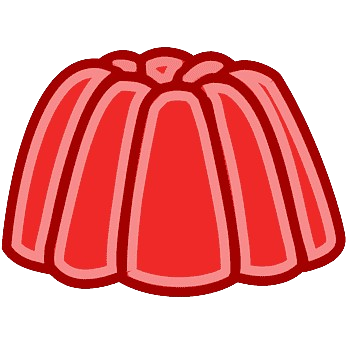Hojicha Jelly

A light and refreshing delicacy, Hojicha Jelly is created with roasted green tea powder and kanten (agar). These jiggly jelly cubes, garnished with sweetened condensed milk, are a perfect after-dinner snack or afternoon treat. {Vegan-friendly}
Do you typically have dessert after a meal? These days, when I have cravings, I tend to lean toward lighter, less sugary treats. I made Hojicha Jelly (ほうじ茶ゼリー) because my family has been enjoying hojicha (roasted Japanese green tea) a lot lately. It’s a fun variation from the typical ice cream or desserts that is tasty, simple, and refreshing. You must try this dish if you enjoy tea and jelly!
What is Hojicha Jelly?
Jelly is a popular dessert enjoyed on all occasions in Japan. I’ve shared several classic flavors, including Coffee Jelly, Fruit Jelly, and Orange Jelly on the blog. Today, we’re making a more uniquely flavored jelly with hojicha, which I’m genuinely excited about.
Hojicha (焙じ茶, ほうじ茶), or roasted Japanese green tea, has an earthy, mildly sweet, toasty aroma that is delightfully calming. My family enjoys the tea hot or cold, and you can find my recipes for Iced Hojicha Latte and Cold Brew Hojicha. In addition to beverages, hojicha also makes an excellent flavoring in desserts.
To make this jelly, I use hojicha in fine powder form and kanten powder as the firming agent. (More on kanten below.)

Why You’ll Love This Recipe
- A light and refreshing dessert. You can omit or reduce the sugar, or you may want to add more to your liking.
- Super quick and easy to make. All you need is to dissolve kanten powder in water, and then add the hojicha powder, and sugar. It sets fast, so you can eat the dessert pretty quickly!
How to Make Hojicha Jelly
The Ingredients You’ll Need
- Kanten powder – I use a Japanese brand called “Kanten Papa,” which is available at Japanese grocery stores and on Amazon. The box contains four 4-gram packets, and I use one packet for the recipe. You can also use agar powder (although I’ve never tried it, I assume it works similarly).
- Hojicha (roasted green tea) powder – I use the hojicha powder from Hojicha Co. Alternatively, you can brew strong hojicha if you prefer to use loose tea leaves.
- Sugar – You can adjust the amount or leave it out if you prefer.
- Serve with: sweetened condensed milk, milk, kuromitsu (Japanese black sugar syrup)
The Cooking Steps
- In a small pot, whisk the kanten powder and measured water and bring it to a boil. Once boiling, reduce the heat to low and simmer for 2 minutes. Remove from the heat.
- Add the hojicha powder and sugar and whisk until the sugar dissolves completely.
- Pour the hojicha mixture into a mold and remove any bubbles on the surface.
- Let the mixture cool on the countertop. The jelly will solidify faster at room temperature. Once cool, refrigerate for at least 1 hour or longer.
- To serve, mix the condensed milk and milk to your desired texture and sweetness, then drizzle the mixture over the Hojicha Jelly. Enjoy!
What is Kanten (Agar)?
Kanten (寒天) is a semi-translucent firming agent commonly used in Japanese sweets. It imparts a firmer yet light texture to desserts. Therefore, the jelly made with kanten is not wobbly like soft-style Jello; instead, it maintains its shape and has a toothsome bite.
Some of you might be more familiar with agar, which is another similar ingredient to kanten. The difference is that they are clear and made from different seaweeds, which yields a bit softer in texture than kanten. Japanese recipes specifically call for kanten, but if you can’t access it, feel free to use agar.
You might wonder about gelatin. Gelatin will yield a slightly different texture. It also doesn’t set as firmly or quickly, and it needs to be kept cold in the fridge.
Since kanten is naturally vegan and vegetarian-friendly, you can serve the jelly to everyone without worrying about dietary requirements.



